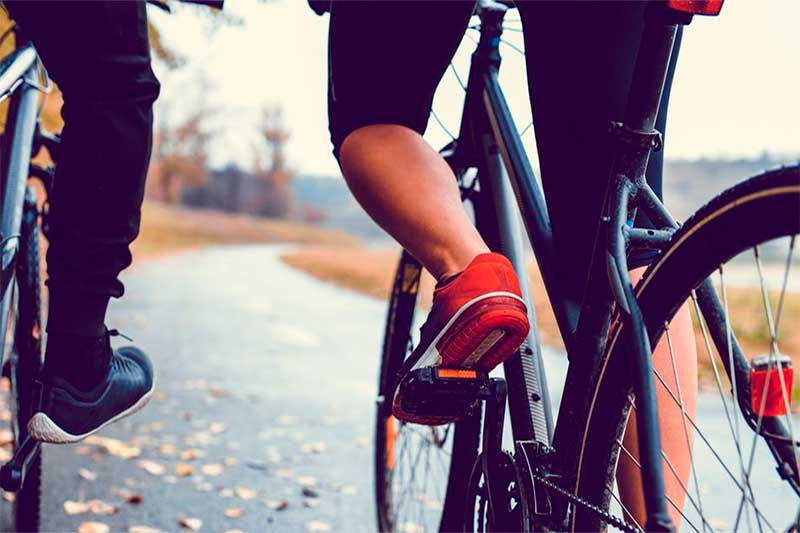The choice of a bike depends, truism, on the practice to which one is destined. It also depends on your level, your ambitions, and, let’s just say it, on your desires. So you don’t buy a city bike for ultra-distance cycling or a track bike for cycle-cross!

It is true that we have seen city bikes on the Paris-Brest-Paris race and track bikes on the cyclocross circuits… But their presence is more anecdotal, folklore, or – quite simply – a lost bet, than a serious reality. So it is important to choose a suitable bike. A bike capable of ensuring a certain comfort in use. A bike that allows you to optimise your performance, or at least to ensure a quality pedalling, for an average speed in line with your possibilities. A good position. A bike that fits.
Bike size: a question of ergonomics
There’s no secret about it, being well positioned on your bike means above all saving yourself a lot of pain, while improving your performance. Ergonomics is a science that must be applied immediately. Ergonomics is a science in its own right. It is therefore by nature that it seeks the greatest possible precision. To achieve this, it has to deal with the interplay of mechanics.
It must take into account the fact that the movement of the cyclist’s bone segments and joints during pedalling is constrained by five unavoidable “constraints”: the two feet (which rest on the pedals); the pelvis (which rests on the saddle); and the two hands (which grip the handlebars in various places!). Comfort and performance depend on these five points of support, which are constantly changing.
Bike size: according to your different practices
A bike that is too small or too big (even by one or two centimetres) will not provide the same pleasure, the same performance, or the same comfort as a bike that is the same size. And from one practice to another, you will have to adapt. How do you do this? By starting from the frame. Because everything starts from the frame.
More than the frame, it is the main triangle (seat tube for the height, “horizontal” or “top tube” for the length and diagonal tube to ensure rigidity) of the frame, which will condition the size of the peripherals (cranks, handlebars, stem or seat post). The frame must be adapted to the morphology.
Bike size: choosing the right height
For as long as bicycles have existed (almost 150 years), technicians, scientists, and simple observers, full of ideas, have developed a number of formulas to determine the right frame size. The starting point for these formulas is the length of the crotch (without shoes, standing against a wall with your legs slightly apart, you have to measure the height of the perineum), because it is the height of the seat tube (from the bottom bracket axle to the bottom of the seat post) that determines the size of the bike. As conventional frames are “square”, the height is equal to the length…
For a road bike, the correct formula is: inseam length (in cm) X 0.66 = ideal bike size (in cm).
For a mountain bike, the correct formula would be: inseam length (in cm) X 0.59 = ideal bike size (in cm).
Bike size: finding the right length
If the height of a frame is important, especially for pedalling, it is also important to pay particular attention to the length of the frame. This is the parameter on which the rider’s comfort depends, especially during prolonged efforts.
In order to calculate this optimal length, taking into account the morphology of each person, it is necessary to measure the upper part of the body; to do this, it is important to determine the ratio between the legs (EJ) and the height (T). This calculation makes it possible to determine the right ratio of height to length for your bike.
Example. If EJ / T = 0.48, then length = height + 1 cm. More generally, if EJ / T < 0.48, then length < height + 1 cm; and if EJ / T > 0.48, then length > height + 1 cm.
Bike size: stack, reach, and cockpit
In order to have a bike that fits and feels right, it is important to know (or measure, or calculate) the height of the saddle, the height of the head tube, and the angle of the seat tube. Then, the adjustment of the peripheral devices (in particular the length of the stem, the width of the handlebars, and of the seat tube) is greatly facilitated.
With these tips you have all the keys in your hands to buy the bike that suits you. But, once again, this information is only indicative. The geometry of current production frames varies from one manufacturer to another and from one practice to another. The height of the frame is very important, but the length of the frame should not be neglected while focusing on the “stack and reach”. To be sure of having a bike that fits, it is important to try it out. The slightest discomfort should be unacceptable, even if a few adjustments can change everything (stem length, handlebar width, choice of saddle model and seat back, crank length, Q-factor, etc.). These adjustments are made according to the morphology, the qualities (climbers, sprinters, rollers…), the objectives and the desires of each person.
